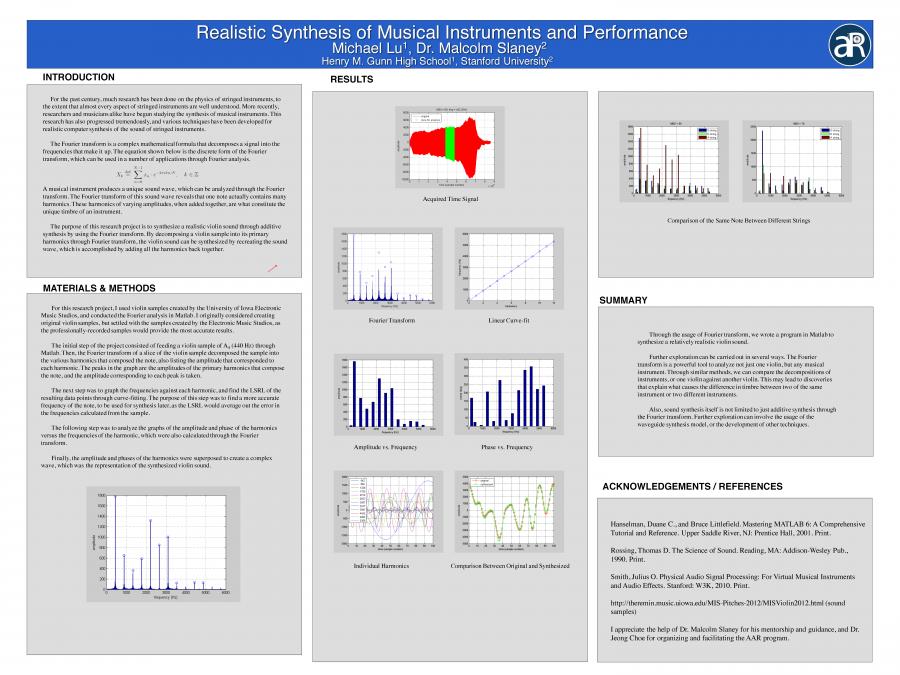Realistic Synthesis of Musical Instruments and Performance by Michael L.
Presentation
Summary
How can audio signal analysis techniques be employed to synthesize realistic instrument sounds and performance of music? In this study, we will be focusing specifically on the violin. For the past century, much research has been done on the physics of stringed instruments, to the extent that almost every aspect of stringed instruments are very well understood. More recently, researchers and musicians alike have begun studying the synthesis of musical instruments. This research has also progressed tremendously, and various techniques have been developed for realistic computer synthesis of the sound of stringed instruments. However, while various techniques have been developed to synthesize highly realistic sounds, computer synthesis falls short to real performances in that it is unable to express emotion and feelings that a real performer would be able to present in a live performance...In this research project, we will be focusing specifically on the violin, and generating realistic violin sounds. We will begin with the analysis of violin samples in order to understand the fundamentals of sound synthesis. Next, we will study and employ sound synthesis techniques from past research to generate realistic violin sounds, and possibly improve upon or create a new technique in the process. Finally, we will build upon previous research on sound synthesis by developing a method to synthesize music with musicality, allowing a much more realistic computer rendition of music. The results of this research project are not limited to the violin, as they can be easily extrapolated to other stringed instruments, and instruments from other families as well...Research will be divided into several steps. The first step is to study the acoustics of the violin. This includes topics such as why the timbre of a violin is unique to the violin and how the violin makes sound. The second step is to analyze violin samples through audio analysis and research methods to synthesize sounds. These two steps should take around a month to complete. The third step is to synthesize an actual violin sound based on the conclusions of the analysis in the second step. This step should also take around a month to complete. Last, the fourth step, which should take around two months to complete, is to develop methods to synthesize more sophisticated violin sounds with various bowing techniques, dynamics, and tempo. Furthermore, if time permits, use machine learning to determine how a musical piece can be synthesized with musicality.

